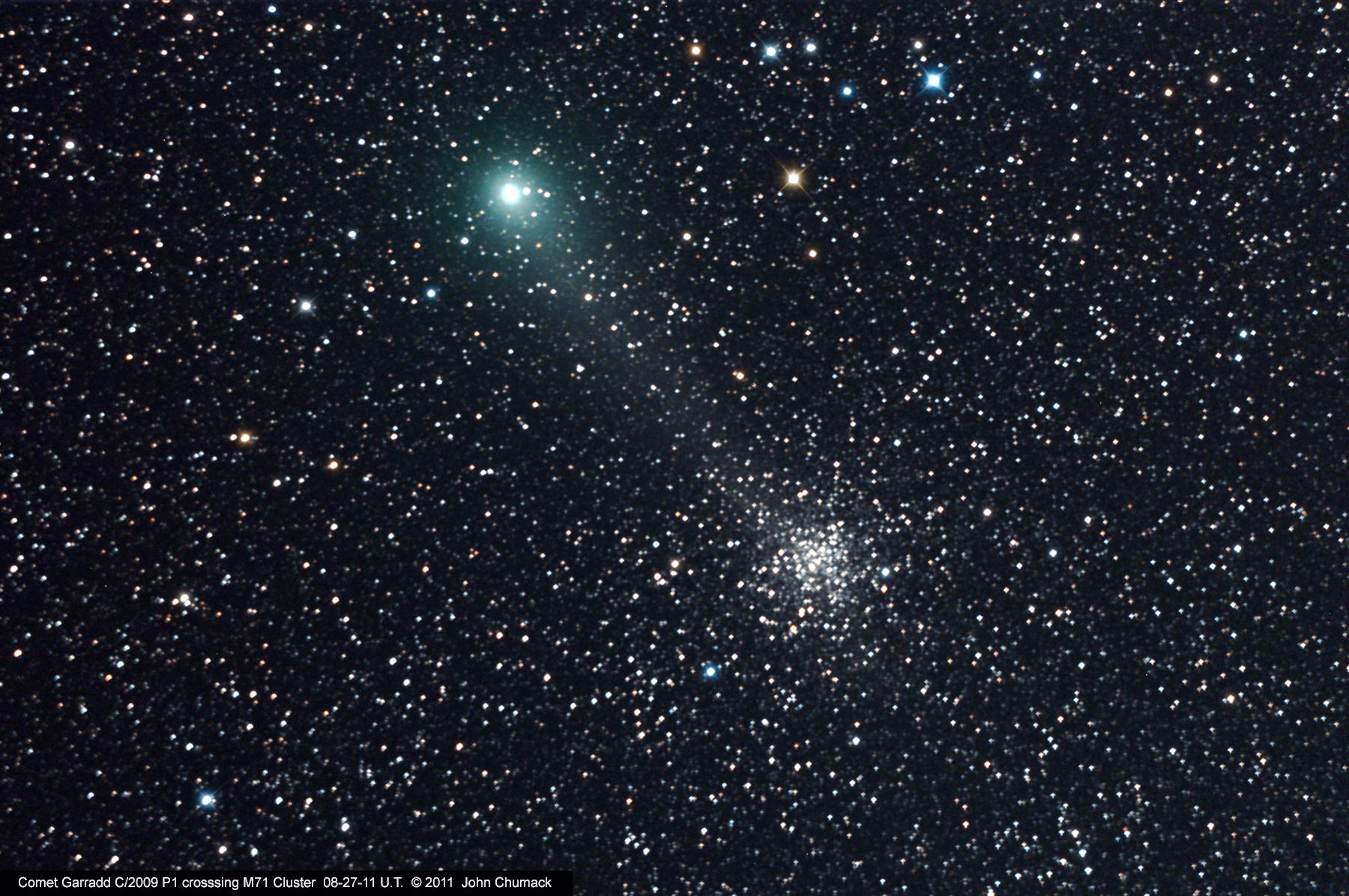[/caption]
For the observing weekend warriors, the last few days have been a very exciting time. Not only have we been treated to a supernova event in Messier 101, but we’ve had the opportunity to watch Comet C/2009 P1 Garradd silently slip by Messier 71! Wish you were there? Step inside and you can be…
A few days ago we brought you a “live” broadcast of the comet thanks to Bareket Observatory. Thousands of UT readers had the opportunity to view and enjoy for a full six hours and – thankfully – the weather cooperated. Want to see the results? You can check out the comet video here.
On Friday, August 27th, comet Garradd had another “picturesque” moment… It swept by an often over-looked Messier object – M71.
But it didn’t pass by John Chumack!
At a distance of 1.402 AU from Earth and 2.193 AU from the Sun, Comet Garradd continues to brighten and will reach perihelion on December 23, 2011. That’s quite a difference from M71’s 13,000 light year distance! Right now the two are almost of identical magnitude, and while the comet has moved on, you can still find M71 in the constellation of Sagitta at Right Ascension: 19 : 53.8 (h:m) – Declination: +18 : 47 (deg:m).
And this isn’t the first time a comet has crossed paths with this star cluster. As a matter of fact, it was in looking for a comet that this bundle of stars was discovered by Pierre Mechain and dutifully and correctly logged by Charles Messier on October 4, 1780. Said Messier, “Nebula discovered by M. Mechain on June 28, 1780, between the stars Gamma and Delta Sagittae. On October 4 following, M. Messier looked for it: its light is very faint and it contains no star; the least light makes it disappear. It is situated about 4 degrees below [south of] that which M. Messier discovered in Vulpecula. See No. 27. He reported it on the Chart of the Comet of 1779.”
Imagine how impressed Mechain and Messier would be if they could see what John did 222 years later! He used a QHY8 CCD Camera and compressed the two and half hour video into the segment you see above. It was done at his Yellow Springs, Ohio observatory and shot through his 16″ homemade telescope.
Now that’s cookin’!
Many thanks to John Chumack of Galactic Images for sharing this incredible video with us!

